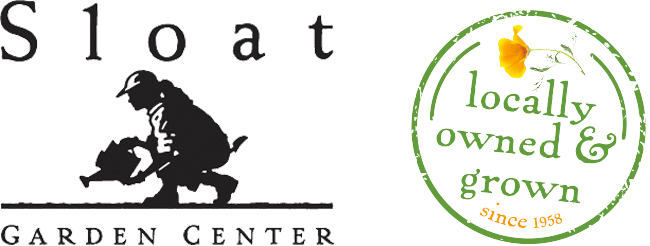(By Botanical Interests Seeds)
Gardeners often ask us, “What can I grow in containers?” Maybe, the better question is “What can’t I grow in containers?”With the exception of watermelons just about any flower, herb, and vegetable can be grown successfully in a container!Container plantings are handy for any gardener, because:
* They are practical for urban gardeners, apartment, or town home dwellers with limited space
* They can be moved at will for convenience or aesthetic reasons
* They can ‘decorate’ your outdoor space, turning a porch, deck, or patio into something as beautiful as a butterfly garden or as delicious as your own private salad bar
* They do not require tilling or weeding.
* They can be moved indoors or covered when frost threatens
* They can be lots of fun to plan and create!
For a fantastic container garden, here are some tips:
Decide if you will be starting the plants indoors then transplanting to the container or sowing the seed directly into the container. (Follow instructions on back of packet based for outside or inside planting, and be sure to thin young seedlings, so they aren’t overcrowded.)
Choose the right size for the right plant:5-Gallon containers are the most versatile. They are less likely to blow over in wind, dry out less frequently, and have room for plants with deep roots. It’s usually better to go larger with a container than put a plant in a container that’s too small. Larger containers are also better for climates that have hot, dry summers. Click here for more tips and a list of recommended container sizes for different vegetables
Use a quality potting soil:
Good potting soil will contain ingredients like compost, perlite, vermiculite, and peat. It will have a light texture with good moisture retentiveness, good drainage ability, and not contain a lot of bark. You don’t have to completely fill a container with potting soil. The bottom third of the container can be filled with a variety of ‘fillers’ like broken pottery shards, rocks, gravel, or crushed aluminum cans or plastic water bottles (to be recycled later).
Provide adequate drainage: All containers need to have adequate drainage. If your container is solid on the bottom, carefully cut or punch a hole in the bottom to prevent plant roots from sitting in water and rotting. Or, you can just insert a plastic container inside that does have drainage holes. If your container is sitting on a wood deck or concrete patio, you can put a drainage dish underneath to prevent staining.
Keep it watered: Containers may need to be watered once or twice every day to prevent them from drying out. A plant that dries out and wilts may not recover from the stress. You can reduce water needs by using a layer of mulch on top of the soil and putting the containers in an area protected from wind.
Fertilize regularly: Nutrients can leach out of containers with frequent waterings. Follow fertilization instructions inside the seed packet for each variety, but apply a little more frequently for happy container plants. For chemical-free fertilizing, try seaweed extract, well-rotted manure, earthworm castings, or compost.
Don’t Overcrowd: Just like in garden beds, young plants in containers need to be thinned and spaced adequately. Plants that are too close together will compete for water and nutrients, resulting in overall weak growth. (Plants that are well established with a good root system can be crowded in closer for a lush design.)
Be Creative! There’s no rule that a container must only contain vegetables, herbs, or flowers. Why not mix them? Also, don’t forget that vining crops like peas, cucumbers, ornamental gourds, and baby pumpkins can be grown in a container if you provide a trellis inside the container or next to it for them to climb.
Here are some fun ideas for some ‘crazy’ container plantings:
- Hanging Basket – Cherry tomatoes. Vines will hang down over the sides.
- Large Sweater boxes – Great for a hodgepodge of lettuce or mesclun
- Old Buckets – 1 tomato or pepper plant. Sow cilantro around it.
- Whiskey Barrels – 1 winter squash plant
- An Old Boot – 1 Swiss Chard plant
- A Colorful Plastic Tub – 1 cucumber plant
- 5-Gallon Recycled Nursery Pot – 1 tomato plant. Sow basil around it.
- Wicker Basket – Line with plastic that has drainage holes cut in bottom. 1 bush bean plant or Cherry Belle radishes. (A great use for those inexpensive baskets you find at garage sales and thrift stores.)
- Coffee cans – Herbs like thyme, oregano, chervil, or parsley
- Large Cookie Jar – Set a plastic pot with drainage holes inside. Sow some pretty annual flowers like alyssum, bachelor buttons, flax, bunny tail grass, impatiens, lobelia, pansies, violas, or nasturtiums.
- Ceramic Mixing Bowls – Use an assortment of sizes and set on a patio table. Set a plastic pot inside each with drainage holes. Grow an assortment of greens like lettuce, kale, mache, micro greens, mizuna, spinach, and watercress.
- Gallon Milk Jugs – For an attractive display, cut off the top ¼ , wrap in burlap and tie with raffia or string. Grow herbs like chives, dill, or mint, veggies like arugula or amaranth edible red leaf, or ornamentals like coleus and marigolds.
- Kitty Litter Tubs – 5 gallon white tubs with handles. Broccoli, cucumbers, eggplant, kohlrabi, okra, peppers, tomatoes. 1 plant per tub. Lots of options!
- 2-Liter Soda Bottle – Cut off top ¼. Great for herbs or a single flower like a nasturtium or snapdragon. Kids will enjoy seeing the roots grow through the clear plastic.
- Chinese Takeout Containers – Grow a quick crop of micro greens.
More fun ideas include: a bicycle basket, old tires, plastic storage bins, wheelbarrows, an old bathtub, a wagon.


